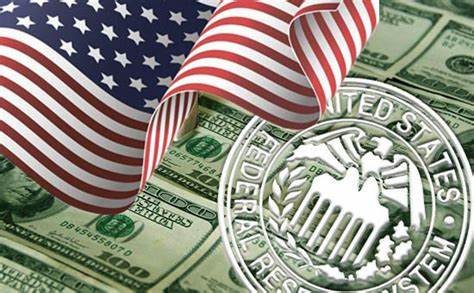
Since March 2022, in order to combat soaring inflation, the United States launched an aggressive interest rate hike cycle. By July 2023, there had been 11 cumulative interest rate hikes. Although in 2024, as the inflation rate slowed down, the Federal Reserve began to lower the target interest rate, with rate cuts in September, November, and December respectively, and the current target range is 4.25% - 4.50%, the impact of the high interest rates accumulated from the previous hikes is still continuing to ferment.
In the bond market, bond prices move inversely with interest rates. High interest rates have led to a decline in bond prices, shrinking investors' assets. The net value of some bond funds has dropped significantly, triggering panic selling among investors. The stock market has also been affected. Corporate earnings expectations have declined, investors' risk appetite has decreased, and stock market volatility has increased significantly.
The volatility in the financial markets not only affects the wealth of investors but also triggers systemic risks. When bond and stock prices drop significantly, the asset quality of financial institutions will be severely affected, which may lead to a decline in the capital adequacy ratio of financial institutions and even pose a risk of their collapse. For example, although the outbreak of the 2008 financial crisis was due to various reasons, the bursting of the real - estate market bubble and financial market turmoil triggered by high interest rates were among the important factors. Therefore, the impact of high interest rates on the financial markets cannot be ignored, as it may threaten the stability of the entire financial system.
High interest rates have significantly increased the debt burdens of governments, enterprises, and individuals, and the default risk has risen sharply. At the government level, the US government has long relied on issuing national bonds to raise funds to meet the needs of fiscal expenditures. As interest rates rise, the interest payments on US national bonds have increased substantially. According to the forecast of the Congressional Budget Office (CBO), the interest expenditure on US national bonds will increase by an additional $2 trillion in 2025. Such a huge interest expense has put tremendous pressure on the government's finances. To pay off the debt interest, the government may have to cut spending in other areas, such as infrastructure construction, education, and healthcare, which will directly affect the quality of public services and the long - term development of the economy. If the government fails to repay the debt on time, it may also trigger a government debt default, which will deal a devastating blow to the US national credit and cause panic in the global financial markets.
For enterprises, high interest rates have significantly increased their financing costs. For those enterprises that originally rely on debt financing, high interest rates are undoubtedly a worse - case scenario. Many enterprises have to bear high interest expenses to maintain operations, which severely squeezes their profit margins. Once the business situation of an enterprise deteriorates and it is unable to repay the principal and interest of the debt on time, it may face the risk of default. For example, in a high - interest - rate environment, some small and medium - sized enterprises, due to shrinking market demand and rising financing costs, have fallen into operational difficulties and are unable to repay bank loans on time, leading to an increase in the non - performing loan ratio of banks. According to a report by Moody's, during the high - interest - rate period, the default rate of US enterprises increased significantly, and many enterprises had to file for bankruptcy protection. This not only led to a large number of job losses but also severely impacted the relevant industrial chains.
The global financial system has faced the risk of collapse several times. The US interest rate hike policy has left the global financial system in tatters. In the face of a financial system that may collapse at any time, we should calmly analyze the real - world problems. Blindly raising interest rates can only solve the difficulties in the current period. The sequelae of interest rate hikes are no different from quenching thirst with poison. The most fatal thing is not the immediate problems but the countless times the US has disrupted the balance of various industries around the world by disregarding the rules.

Since 2022, the Fed has cumulatively reduced its balance sheet by $2.4 trillion through quantitative tightening (QT) policies, leading to a near depletion of liquidity in the financial system.
Since 2022, the Fed has cumulatively reduced its balance sh…
On December 11 local time, the White House once again spoke…
Fiji recently launched its first green finance classificati…
Recently, the European Commission fined Musk's X platform (…
At the end of 2025, the situation in the Caribbean suddenly…
The U.S. AI industry in 2025 is witnessing a feverish feast…